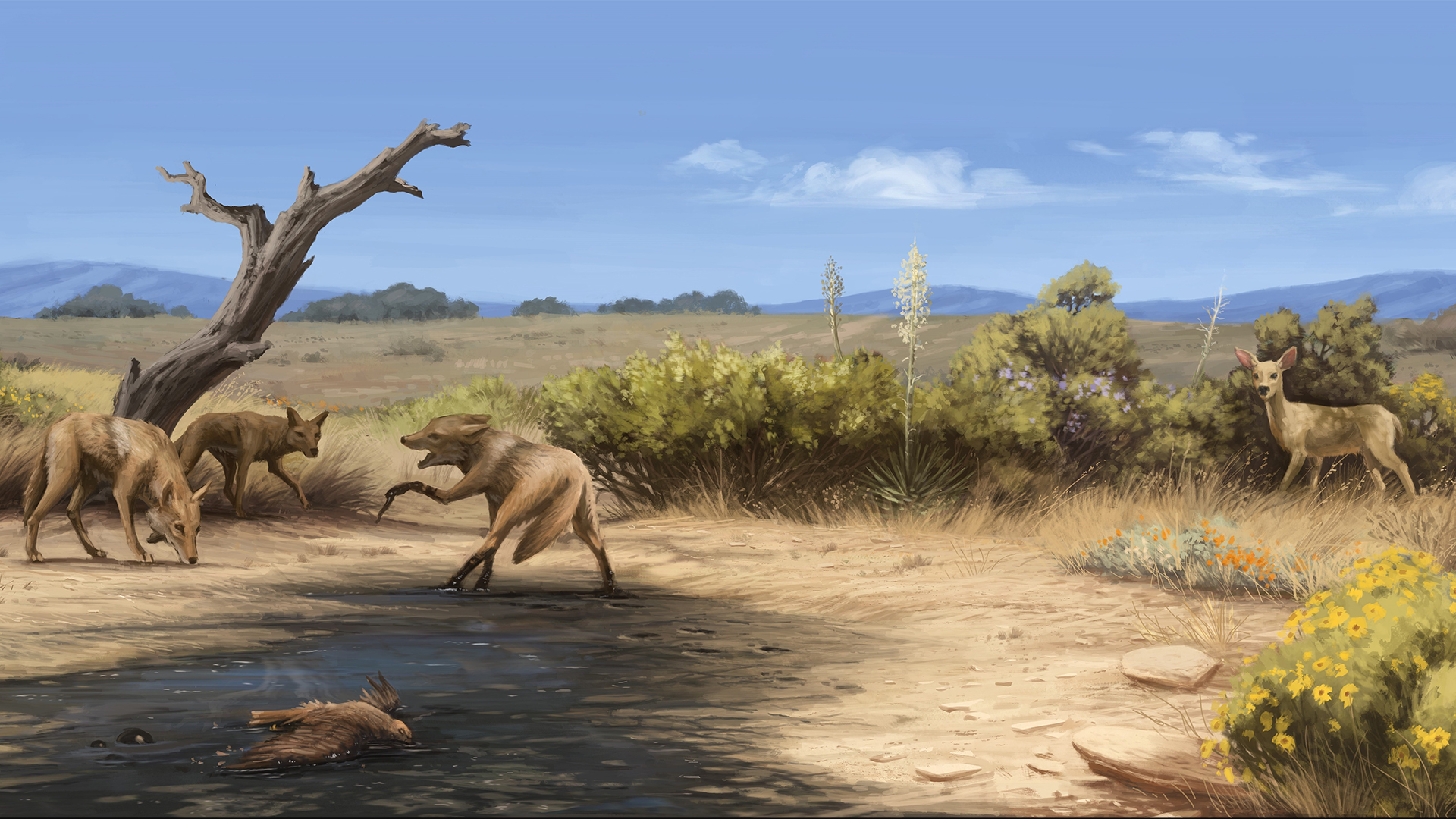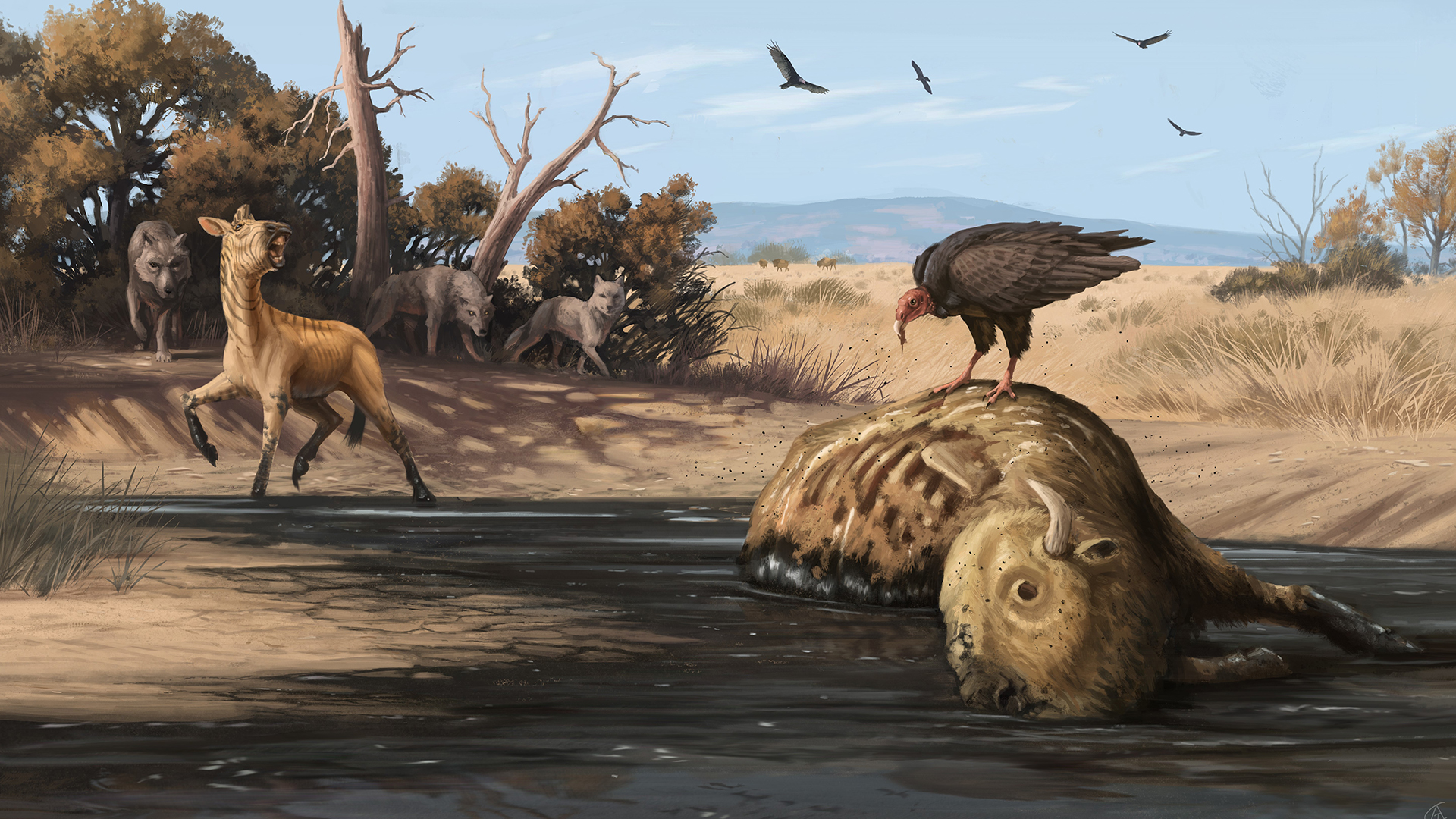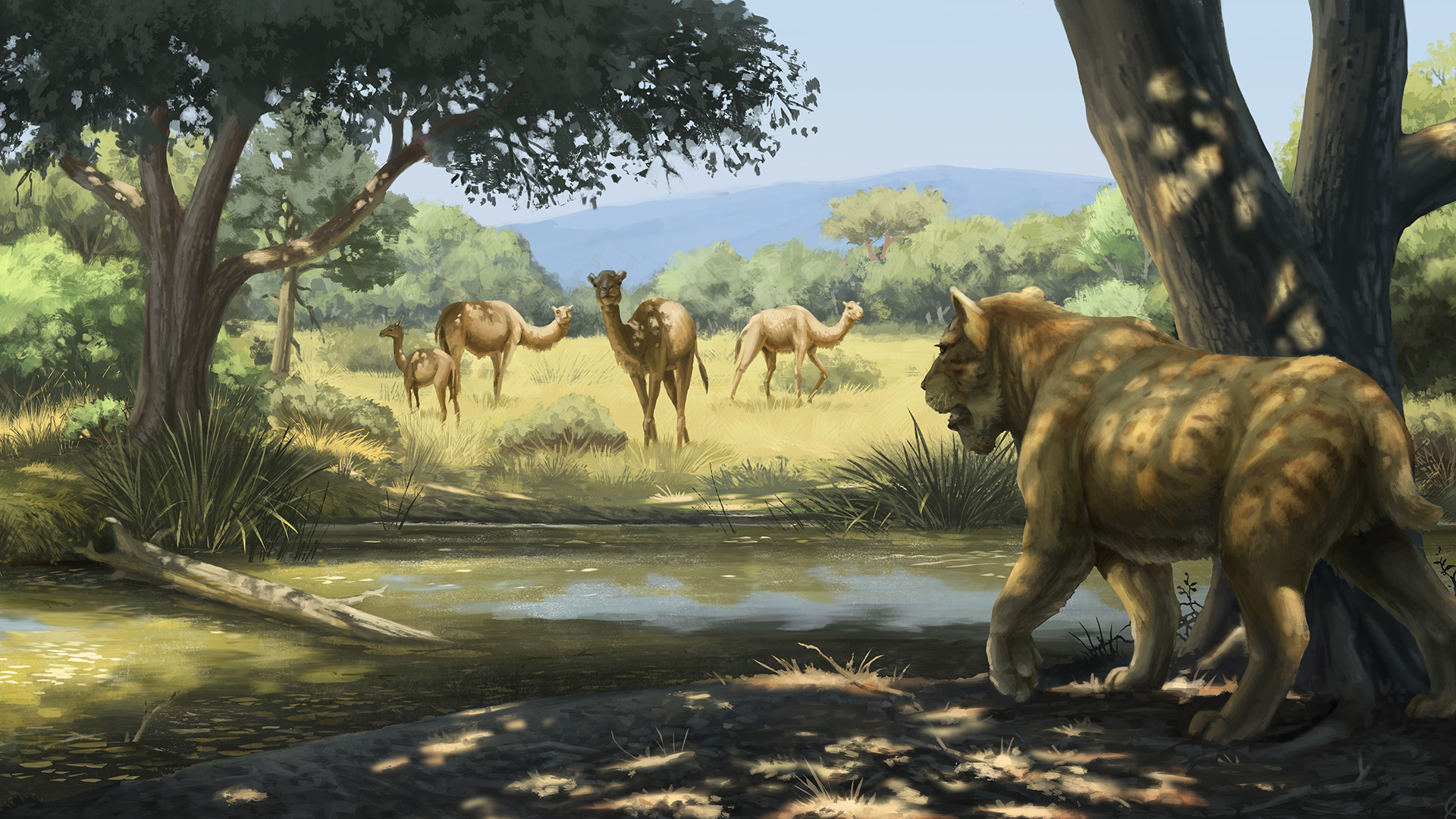
Ice-age humans may have set megafires in what is now Southern California, making the region uninhabitable for a thousand years, new research suggests.
These massive wildfires may have been a major contributor to the extinction of megafauna in the area, fossils from the La Brea tar pits suggest. The findings were published Aug. 18 in the journal Science.
"When fires like this happen, it's almost like a bomb has gone off. It was like a wasteland for 1,000 years," study lead author F. Robin O'Keefe, a biologist at Marshall University in West Virginia, told Live Science.
O'Keefe and colleagues used a complex array of data to model the changing ecosystem in California following the retreat of glaciers in North America during the late Pleistocene epoch (2.6 million to 11,700 years ago), which included the last ice age. Key to their analysis was the carbon dating of fossils deposited in the La Brea tar pits, a paleontological research site in Los Angeles. The bones of numerous large mammals have been extracted from these asphalt seeps, providing an extensive record of the animals that once inhabited the region.

"This is really fascinating because we have a sample size that's biologically meaningful," O'Keefe said. Such massive deposits of large mammal fossils are rare.
The team focused on the eight most common mammals hauled from the oily depths of the pits: American lions (Panthera atrox), ancient bison (Bison antiquus), coyotes (Canis latrans), dire wolves (Aenocyon dirus), Harlan's ground sloths (Paramylodon harlani), saber-toothed cats (Smilodon fatalis), western horses (Equus occidentalis) and yesterday's camels (Camelops hesternus).
The team extracted the protein collagen from 172 preserved bones and then used radiocarbon dating to ascertain when each animal died. The fossils dated to between 15,600 and 10,000 years ago.
The researchers compared the frequency of these fossils over time with existing data from Lake Elsinore, southeast of Los Angeles, on pollen deposits — which indicate the diversity of plant life — and the estimated time period in which charcoal from wildfires was deposited in the region's sediment layers. Shifts in all three records correlated tightly to estimated increases in human settlement. Computer modeling suggested that human populations rapidly expanded in the region starting 13,200 years ago.

Around 13,500 years ago, charcoal deposition increased exponentially, pointing to an extended period of wildfires. The overlap in pollen and charcoal shifts suggested that human activities may have triggered these fires.
"We don't know if these were started by campfires or if they were actually lighting fires in order to drive the game," O'Keefe said.
Evidence for humans in the area during this period is scant. However, O'Keefe said this doesn't weaken the team's hypothesis. In fact, the fires may have made the region inhospitable for humans.
All of the species analyzed, aside from coyotes, vanished from the region by 12,900 years ago.
"That was really an aha moment,” O'Keefe said. "The megafauna record just stops. They weren't getting caught [in the tar pits] because they weren't there anymore."
The study suggests massive mammals in the region died out at the end of the Pleistocene due to a confluence of factors. A warming climate and periods of drought left vegetation susceptible to fire. Southern California transitioned from a moist woodland environment to a dry chaparral, or shrubland, priming the region for fires.

At the same time, human populations grew. Their fires swept through drying forests and accelerated massive ecosystem shifts.
The giant animals that had once comfortably grazed on lush plant matter now struggled to find food at the same time as humans began hunting them. And then their world burned to the ground.
"We see deep parallels between the situation that we're facing today in this extinction 13,000 years ago," O'Keefe said, referring to the wildfires currently raging in North America and other regions.







